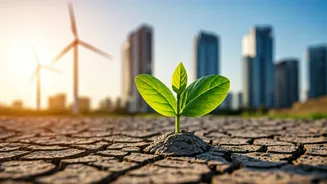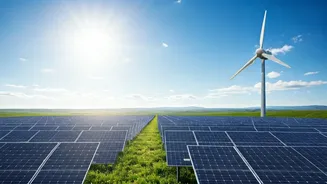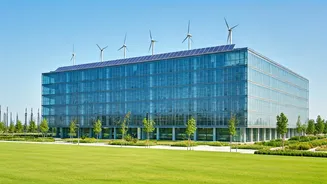Defining Sustainable Economies
Sustainable economies are designed to meet current needs without compromising the ability of future generations to meet their own. This involves balancing
economic growth with environmental protection and social equity. Key indicators often include factors like renewable energy adoption, carbon emissions reduction, waste management efficiency, and social welfare programs. The goal is to build economies that are resilient, resource-efficient, and contribute positively to both human well-being and environmental health. This holistic approach ensures that economic activities do not deplete natural resources or exacerbate social inequalities. It focuses on long-term prosperity rather than short-term gains, creating systems that are adaptable and can withstand environmental and social challenges. Investing in sustainable practices is seen as a way to mitigate risks, create new opportunities, and improve overall quality of life for all.
India's 2025 Ranking Examined
The article reveals India's rank among the top sustainable economies in 2025. While the specific numerical rank isn't provided, the piece aims to contextualize India's standing. Understanding India's placement within this global ranking provides a snapshot of its progress in integrating sustainability into its economic policies. It highlights both successes and areas for improvement, reflecting the nation's efforts to balance rapid economic growth with responsible environmental stewardship. The ranking incorporates various metrics that are crucial to understanding an economy's overall sustainability. It's a barometer of India's commitment to climate change mitigation, resource conservation, and inclusive growth. Moreover, this offers a chance to benchmark India against other leading nations, identifying the best practices and potential areas for collaborative efforts. It's crucial for understanding how the nation's actions are contributing to global sustainability goals.
Comparing to Global Leaders
A core aspect of this analysis is comparing India's sustainability performance with that of the United States, the United Kingdom, and China. This comparative assessment allows for a deeper understanding of the strategies each country employs to promote sustainable economic development. By examining specific factors such as energy consumption, waste management, and social impact indicators, the article explores how each nation is addressing environmental and social challenges. Highlighting key differences in approaches allows readers to grasp the complexities inherent in sustainable policies. Comparisons can also illuminate innovative solutions and effective strategies that India may adopt or modify to improve its standing. These comparisons don't just focus on the final ranks; they delve into the specific policies, investments, and challenges each country faces, providing a comprehensive understanding of sustainable economic practices on a global scale.
Key Sustainability Indicators
Several key indicators are used to evaluate a country's economic sustainability. These indicators often include the percentage of renewable energy in the energy mix, which demonstrates a commitment to reducing reliance on fossil fuels. Carbon emissions per capita are another key factor, reflecting the environmental impact of economic activities. Waste management efficiency, including recycling rates and landfill diversion, shows how well a country handles its resources. Social welfare programs, like access to healthcare and education, are essential in evaluating social equity and human capital development. The overall investment in green technologies, such as solar power and electric vehicles, indicates a commitment to long-term sustainability. The article likely explores how India measures up on these indicators, offering readers a clear view of its progress. Highlighting these measurable factors provides a data-driven overview of a country's sustainability performance, allowing for objective evaluations and comparisons.
Implications and Future Outlook
Analyzing India's position in the top 10 sustainable economies has implications for its future economic policies and international relations. A high ranking might attract foreign investment, boost the country's reputation, and increase its influence on global sustainability initiatives. It could also encourage further reforms and investments in green technologies and sustainable practices. Understanding the challenges and opportunities associated with India's rank allows for strategic planning for the future. This includes focusing on areas where improvement is needed and leveraging the strengths the nation already possesses. This forward-looking perspective suggests the article's aim is to equip readers with insights needed to understand India's sustainability journey and appreciate its potential for shaping a more sustainable world. This also provides context for international collaborations and partnerships that can accelerate the transition toward a greener and more resilient economy. The article provides a glimpse into the future of India's economic practices and their contribution to global sustainability goals.











